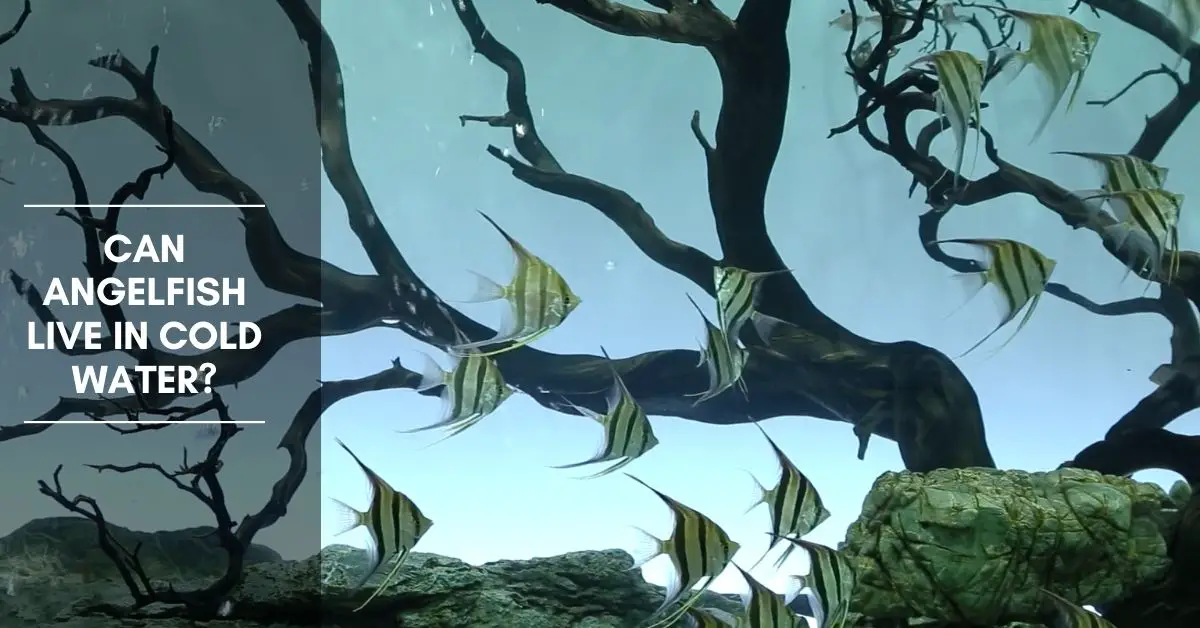The temperature of even equatorial jungle streams and rivers fluctuates more than one might imagine, and for this reason, angelfish have a considerable range of temperatures which to them are tolerable.
While the extremes at either the high or low temperatures should be avoided if possible, especially for extended periods of time, they can be tolerated for brief periods without apparent detriment to the fish. This is especially true in a large aquarium and if wide fluctuations do not occur within too brief a period of time.
What temperature range can angelfish tolerate?
Generally, the temperature limits should be considered to be within a range of 65° to 85°F although 5 degrees can be extended at the upper and lower limits if the time is brief and the aquarium is well aerated and filtered. For ordinary maintenance of angelfish, a temperature of around 75°F could be considered ideal. At this temperature, they are quite active, and growth is excellent. Breeding can be stimulated in mature fish by a rise in temperature to 80° – 82°F combined with a partial water change.
European aquarists are less inclined than Americans to try to maintain a steady temperature, allowing the temperature to fall a few degrees at night and rise again the next day. The theory is that this is a healthful practice since it is what occurs in nature.
Do I need to add a heater to my Angelfish tank?
Maintaining a desirable temperature for tropicals is no longer a problem. A number of reputable and dependable manufacturers produce excellent automatic heaters in a wide variety of styles and wattages. While separate thermostats and heaters are still in use, much more popular are the integrated single-tube units that contain both thermostat and heater as well as a capacitor (condenser) to eliminate radio and television interference.
There are also two-tube integrated units which house heater and thermostat separately for the theoretical purpose of not having heat produced within the tube by the heater affect the ability of the thermostat to read the water temperature.
In practice, the two systems seem to work out equally well, and most aquarists will find the single-tube models much more convenient. Settings are made by a knob on top of the part of the heater housing which hangs on the side of the aquarium above the water. The wattage of the heater to be used depends mostly on the size of the aquarium.
There is an old (but workable) rule of thumb allowing 5 watts per gallon. Because of water’s great capacity to store heat, this figure is somewhat adjustable on a sliding scale downward as the size of the aquarium increases, and except for occasions of great differential between ambient and desired temperatures, a 200-watt heater is probably adequate for a 100-gallon aquarium.
This is the largest size heater ordinarily manufactured in an automatic unit. If more wattage is required, the separate thermostat and heater system can be used, since thermostats can be purchased with capacities up to 500 or 600 watts, and heaters can be added by plugging into the thermostat unit until the desired wattage is reached.
Of course, several heaters may be used in the same tank. While there are economy lines of heaters available which are quite good value, more expensive models are generally more accurate, more dependable, and less likely. to cause radio and television interference.
Cheap heaters sometimes fail and have been known to “cook” a tankful of fish. It is better to spend a bit more and be confident of a reliable unit with prized fishes. In general, it is best to buy only equipment that is advertised in hobbyist forums and recommended by your aquarium dealer.

Hi, my name is Sean, and I’m the primary writer on the site. I’m blogging mostly about freshwater and saltwater aquariums, fish, invertebrates, and plants. I’m experienced in the fishkeeping hobby for many years. Over the years I have kept many tanks, and have recently begun getting more serious in wanting to become a professional aquarist. All my knowledge comes from experience and reading forums and a lot of informative sites. In pursuit of becoming a professional, I also want to inspire as many people as I can to pick up this hobby and keep the public interest growing.
Read more about Sean.
Please join also my Facebook group.


1 thought on “Can Angelfish Live in Cold Water? Do I Need to Add a Heater to the Tank?”
Comments are closed.